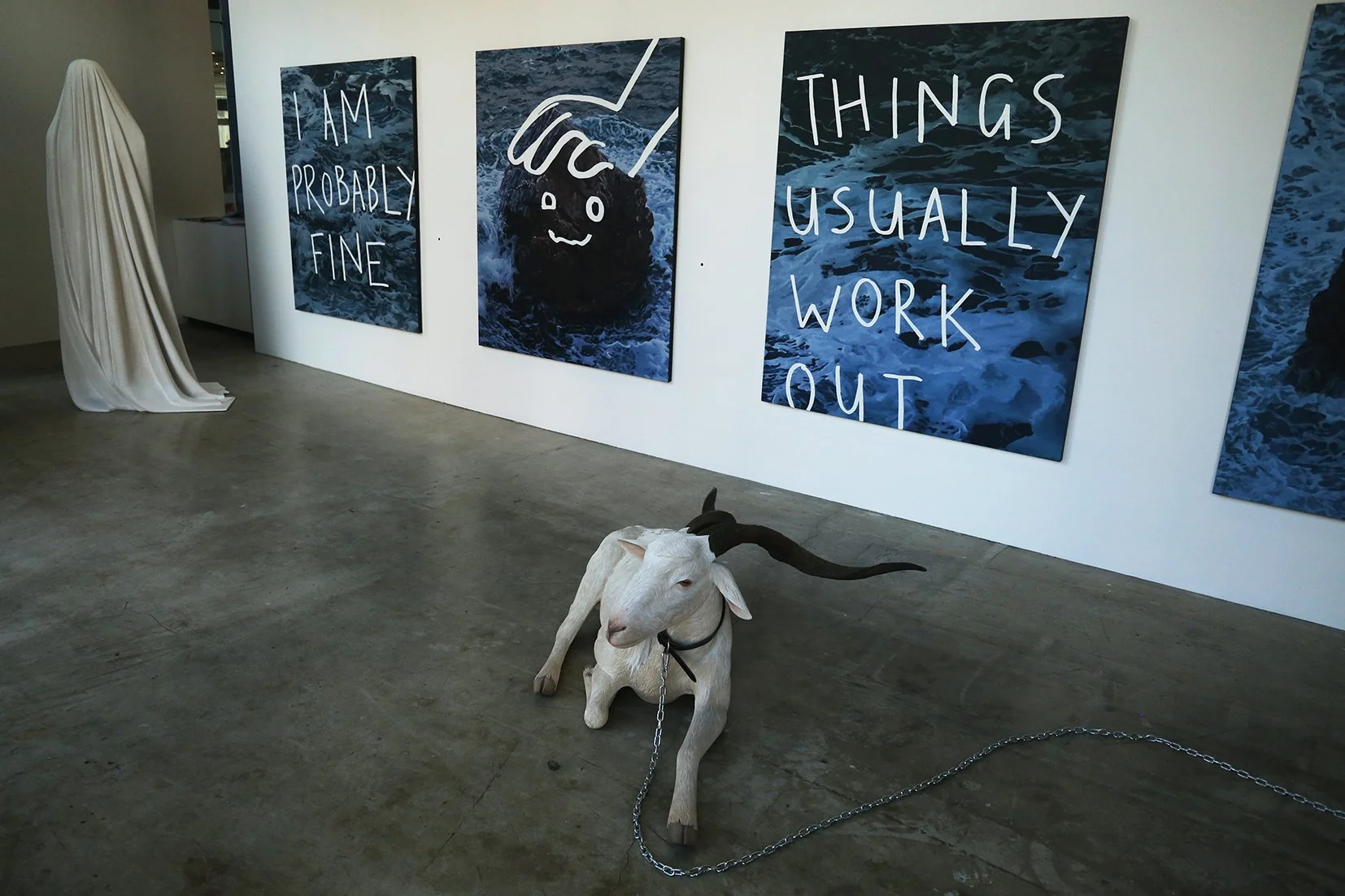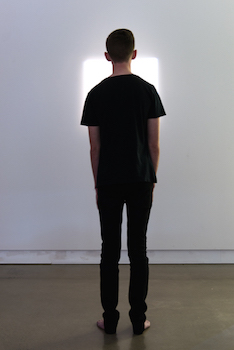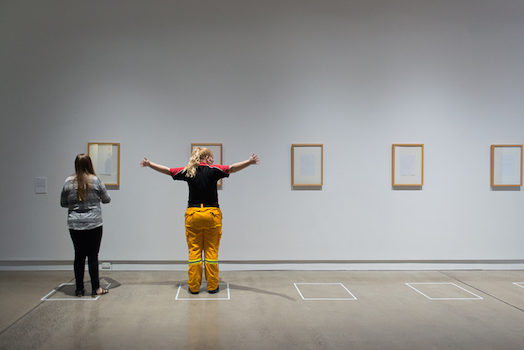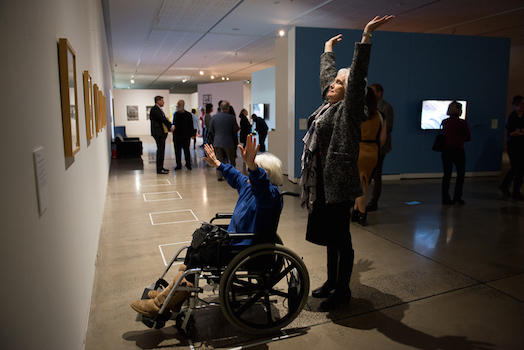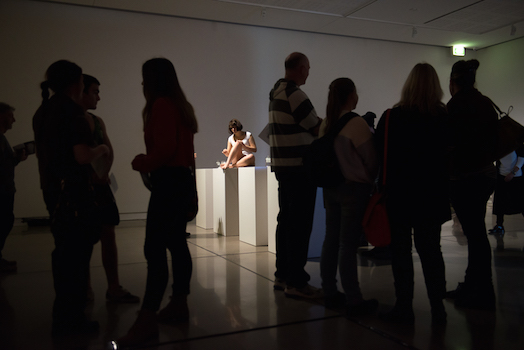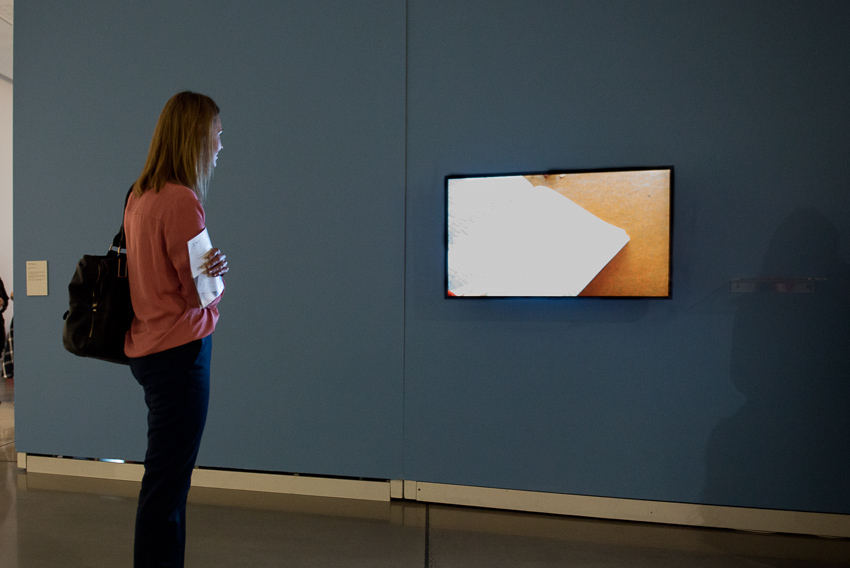In April this year I started working part-time at the Australian Design Centre, in the wonderfully nebulous, newly formed position of Creative Strategy Manager. ADC has been around for more than fifty years now – it began it’s life as the NSW Craft Council back in the 1960s and over the decades has made some extraordinary contributions to the craft and design landscape of Australia. The opportunity to contribute to the organisation’s development at a moment of re-visioning and to bring my ideas and experiences and passions for making and education and partnerships was too good to be true. And then three weeks later we were one of the 100-plus arts organisations to lose our four-year core funding from the Australia Council for the Arts.
It was like being sucker-punched.
Yes, I despaired for the organisation – but mostly, that instinctive, from-the-gut howl of despair that engulfed me was the feeling, yet again, that the arts don’t matter. And that by extension, the things I stand for, the way I see the world and the way I understand the arts to be a vehicle for critical discussion, enlightenment, learning and community also didn’t matter. As Alison Croggon writes so deftly and angrily and articulately for The Monthly, “Part of the exhaustion of being an arts worker in Australia is that our very existence is continually in public question.” She articulates the fibres of every thought and emotion from the last six months of soul crushing keeping on carrying on with extraordinary eloquence. I can’t recommend her article enough and implore you to read it in full here.
Because she says it so much better than I ever could, I have re-posted sections of it below. Because now more than ever we need to be championing every dissenting, elegant, intelligent, critical voice we can. Thank you Alison.
“Culture Crisis: The arts funding cuts are just a symptom of a broader malaise in Australia.” Alison Croggon, The Monthly, October 2016.
“The despair that characterises so much present discussion about our cultural future is about much more than money. What has been clear for years is that in general public discourse – as opposed to the preferences of actual Australians – culture is a trivial consideration. Part of the exhaustion of being an arts worker in Australia is that our very existence is continually in public question. Again and again, we have to assert presence and value. It is impossible to simply assume that culture is a common good: it must be constantly argued.
Outside the specialist world of arts discussion, Australia has two modes of talking about culture and art: the mockery from right-wing columnists who regularly attack artists (as well as other knowledge workers, such as scientists and university researchers), and the bathetic motherhood statements about art’s intrinsic worth that roll readily from the mouths of politicians. Art is considered a leisure activity, a luxury for an elite, an entertainment in the most reductive senses of the word, a value-free product.
Advocates even point out the economic benefits of a healthy culture, to combat the erroneous but widespread perception that it contributes nothing to the economic bottom line. (For the record, culture is a bigger industry than agriculture, and employs many more people than the mining sector.) But the danger is that these secondary issues become the primary justifications, erasing the reasons why culture actually matters.
Again and again, public discourse about art has taken the road of least resistance, preferring to shore up the status quo rather than to question, to expand, to educate, to inquire, to imagine better.
Criticism is a crucial part of making a culture. Critical discussion in all its manifestations – from the casual tweet to the considered academic essay – is the hinge that links an artwork to a public. Critique is what connects one work to another, and to the contexts – the histories and social meanings – that inform it. Argument is how we hammer out the value of a thing, creating over time a complex weave of consensus and disagreement. A healthy critical culture welcomes the new and strange, inviting those who might feel hesitant to step confidently into the rewards of not knowing.
Do we have this kind of public discussion in Australia? We do, but it scarcely exists inside our major media institutions. It’s fostered in small companies, on blogs, in forums and discussions that exist on the margins of mainstream discourse. Over the decades, our mainstream critical culture has failed to convince us – the public, our governments, even artists themselves – of the value of culture in our daily lives. It has failed to articulate why Australian art might matter as a public good, to individuals and to a broader society. And now, as Australian culture faces its biggest crisis, that failure is tragically manifest.
Under the newly constricted funding, small organisations and individuals – the sources of our most robust critique – are those who are most at risk. With a few noble exceptions, it’s always been those with the least institutional heft who have been the most outspoken. Indeed, small organisations and artists, rather than our well-resourced institutions, have driven almost all of the political heavy lifting in the turmoil of the past year. Just as the larger companies rely on the poorly funded independent sector to take the creative risks that generate new ideas and new talents, so the smaller organisations and individuals are those expected to stick out their necks to defend the whole.
It was grassroots-driven activism that had sparked a Senate inquiry, which attracted 2719 submissions from every section of the arts community, held hearings in every state and territory, and put the arts firmly, and for the first time, on the agenda in the 2016 election.
Likewise, our major media outlets have for decades relegated the arts to a fenced-off playpen, a subset of the entertainment section. The Walkleys, the premier awards for Australian journalism, have never acknowledged cultural journalism or criticism as they do, for example, the equally specialist journalism of sports coverage. In the newsroom, the arts have always been poor cousins, begging for space. The ideas that drive our best artists, the passion that informs their work and their desire to speak about this world, almost never make it into print or pixels except as bowdlerisation. There isn’t the space.
…..And yet we need a strong critical culture now more than ever.
The critic is the person who makes a major part of the public argument for culture. It is a critic’s job to discover and to advocate for new and exciting work, to estimate its success or failure, to elaborate its genesis, to call to account, to argue for worth and unworth. Ideally, the critic exists as part of a web of diverse voices, where differences of response can be adumbrated and explored. This dynamic interweave of argument is how a culture is made: as Mexican critic and poet Octavio Paz said, criticism is what makes connections and histories, a culture. Without criticism, what you have is just a whole lot of art.”
OTHER POSTS
-
2025
- Oct 15, 2025 Art Guide Australia: Material curiosities, MCA Primavera Oct 15, 2025
- Aug 28, 2025 Berlin trip: Connected Audiences Conference and some Art, Art, Art.... Aug 28, 2025
- Jul 2, 2025 Art Guide Australia: Studio profile of Monica Rani Rudhar Jul 2, 2025
- May 5, 2025 ABC Arts: Lauren Brincat, When do I breathe? May 5, 2025
- Apr 23, 2025 Art Guide Australia: Tina Havelock Stevens Apr 23, 2025
- Apr 5, 2025 Connected Audiences Conference - Culture & Young People: What could possibly go wrong? Apr 5, 2025
- Apr 4, 2025 ABC Arts: Thinking Together at Bundanon Apr 4, 2025
- Apr 2, 2025 Collecting: Living with Art book launch Apr 2, 2025
- Mar 7, 2025 Art Guide Australia: Mystery Road - Zanny Begg profile Mar 7, 2025
- Feb 4, 2025 Art Guide Australia: Home Truths - feature story Feb 4, 2025
-
2024
- Dec 21, 2024 ABC Arts: Yayoi Kusama at NGV International Dec 21, 2024
- Dec 2, 2024 Artlink magazine's 'Hyphen' issue published Dec 2, 2024
- Nov 25, 2024 Art writing workshop with Woollahra Art Gallery Nov 25, 2024
- Aug 3, 2024 Los Angeles art binge Aug 3, 2024
- Mar 11, 2024 Biennale of Sydney opening & publication Mar 11, 2024
- Mar 9, 2024 Melbourne work trip Mar 9, 2024
- Feb 10, 2024 NGA National Young Writers Digital Residency launches Feb 10, 2024
-
2023
- Dec 6, 2023 Teen Program Symposium: Walker Art Center Dec 6, 2023
- Jul 26, 2023 Sydney Morning Herald: Hustle Harder Jul 26, 2023
- Jul 21, 2023 Publication day! Museum Teen Program How-To Kit Jul 21, 2023
- Jul 20, 2023 Sydney Morning Herald: "A lesson in listening" Jul 20, 2023
- Jul 4, 2023 Art Party at The Condensery Jul 4, 2023
- Jun 13, 2023 Sydney Morning Herald: "These artists shared their work via post, now the paint is almost dry on the result." Jun 13, 2023
- May 18, 2023 Panel talk: Australian Museums & Galleries Association National Conference May 18, 2023
-
2022
- Dec 1, 2022 Published outcomes - National Gallery of Australia: Digital Young Writers Mentorship Dec 1, 2022
- Nov 29, 2022 ABC Arts: 'Air' at QAGOMA Nov 29, 2022
- Aug 28, 2022 The Condensery - Somerset Regional Art Gallery: new youth engagement project - 'Things I Want To Say' Aug 28, 2022
- Aug 13, 2022 ABC Arts: Megan Cope is building a living, breathing artwork on Minjerribah Aug 13, 2022
- Jul 21, 2022 Exhibition essay: Topographies of painting - Gregory Hodge, Sullivan + Strumpf Jul 21, 2022
- Jul 2, 2022 ABC Arts: Richard Bell at documenta fifteen Jul 2, 2022
- Feb 28, 2022 National Gallery of Australia: Digital Young Writers Mentorship Feb 28, 2022
- Jan 5, 2022 Journal of Museum Education article: "Pockets of Resilience - the Digital Responses of Youth Collectives in Contemporary Art Museums During Lockdown." Jan 5, 2022
-
2021
- Nov 13, 2021 ABC Arts: Tarnanthi Nov 13, 2021
- Oct 27, 2021 A New Approach: Enduring Foundations, Bold Ambitions Oct 27, 2021
- Oct 16, 2021 Churchill Chat - Equity, Inclusion & the Impact of COVID-19 on the Arts Oct 16, 2021
- Aug 24, 2021 Art Collector: Pull Focus interview with Abdul Abdullah & Abdul-Rahman Abdullah Aug 24, 2021
- Aug 8, 2021 ABC Arts: Dean Cross and a spotlight on the work of Australia's regional galleries Aug 8, 2021
- Jun 30, 2021 ABC Arts: Hilma af Klint - The Secret Paintings at the Art Gallery of New South Wales Jun 30, 2021
-
2020
- Oct 24, 2020 Raise your voice: young people in the arts Oct 24, 2020
- Oct 1, 2020 Art Collector: Pull Focus interviews for Sydney Contemporary Oct 1, 2020
- Sep 4, 2020 Recommended reading - Teen Vogue Sep 4, 2020
- Jun 8, 2020 SAMAG Talk - Bringing it home: Innovation & Ideas from the Churchill Fellowship Jun 8, 2020
- Jun 1, 2020 MCA GENEXT Goes Online Jun 1, 2020
- May 23, 2020 Vale Frank Watters - Artlink magazine May 23, 2020
-
2019
- Nov 19, 2019 Churchill Fellowship Report - findings Nov 19, 2019
- Aug 21, 2019 Upcoming SAMAG Panel - Youth arts: why we should care what young people think Aug 21, 2019
- May 10, 2019 By young people for young people - A report on the impact of GENEXT at MCA Australia May 10, 2019
- Feb 1, 2019 Art Collector Issue 87: 50 Things Collectors Should Know Feb 1, 2019
-
2018
- Nov 23, 2018 Artist texts: Clare Thackway Nov 23, 2018
- Oct 29, 2018 Announcement of Churchill Fellowship 2018 Oct 29, 2018
- Sep 30, 2018 Frida Kahlo at the Victoria & Albert Museum Sep 30, 2018
- Sep 7, 2018 Elizabeth Willing profile for Art Collector magazine Sep 7, 2018
- Aug 2, 2018 Beyond Community Engagement: Transforming Dialogues in Art, Education and the Cultural Sphere Aug 2, 2018
- Jun 21, 2018 Spotlight on MCA Young Guides Jun 21, 2018
- Feb 1, 2018 Art Collector Issue 84: Undiscovered Feb 1, 2018
-
2017
- Aug 30, 2017 Skulptur Projecke Münster 2017 Aug 30, 2017
- Jul 26, 2017 Te Tuhi Talks Jul 26, 2017
- Apr 2, 2017 New role: Museum of Contemporary Art Australia Apr 2, 2017
- Jan 19, 2017 Louise Paramor profile for Art Collector magazine, issue 78 Jan 19, 2017
-
2016
- Dec 1, 2016 Craft Council UK – Make:Shift conference, Manchester, 10-11 Nov, 2016 Dec 1, 2016
- Oct 30, 2016 Alison Croggon on the arts funding crisis and the importance of criticism Oct 30, 2016
- Apr 27, 2016 Lottie Consalvo: mid-fall, Alaska Projects Apr 27, 2016
- Mar 18, 2016 20th Biennale of Sydney: The future is here it's just not evenly distributed Mar 18, 2016
-
2015
- Nov 22, 2015 Celeste Boursier-Mougenot at the NGV Nov 22, 2015
- Sep 22, 2015 Educating People Like Us Sep 22, 2015
- Aug 2, 2015 What It Means to be Me, Western Plains Cultural Centre, Dubbo, 26 July 2015 Aug 2, 2015
- Jul 12, 2015 More Marina Magic Jul 12, 2015
- Jul 12, 2015 Art Collector cover story Jul 12, 2015
- Jun 25, 2015 Lessons learnt: Kaldor regional progress report Jun 25, 2015
- May 5, 2015 Kaldor pilots regional engagement project May 5, 2015
-
2014
- Aug 21, 2014 Melbourne Art Fair 2014 Aug 21, 2014
- Jun 24, 2014 Fresh Faces Symposium: Art Gallery of New South Wales Jun 24, 2014
- May 24, 2014 REVIEW: Sleepers Awake, MCA C3West Project, Bungaribee May 24, 2014
- Feb 20, 2014 Kevin Chin profile for Art Collector magazine Feb 20, 2014
- Feb 9, 2014 Artlink review: 21st Century Portraits Feb 9, 2014
- Jan 12, 2014 REVIEW: Christian Boltanski, Chance, Carriageworks Jan 12, 2014
-
2013
- Sep 20, 2013 The problem with 'Australia' Sep 20, 2013
- Sep 4, 2013 Margate: An away day and a visit to Turner Contemporary Sep 4, 2013
- Jul 28, 2013 A round-up: Miles Aldridge, Somerset House; Katharina Fritsch, Fourth Plinth, Trafalgar Square; Michael Landy, ‘Saints Alive’, National Gallery Jul 28, 2013
- Jul 21, 2013 Peckham weekends Jul 21, 2013
- Jul 11, 2013 Harpa Concert Hall, Reykjavik Jul 11, 2013
- Jun 4, 2013 St Paul-de-Vence Jun 4, 2013
- May 30, 2013 A visit to Paul Cezanne's studio May 30, 2013
-
2012
- Oct 30, 2012 REVIEW: DOCUMENTA 13, Kassel, Germany Oct 30, 2012
- Oct 28, 2012 Tino Sehgal, These Associations, Tate Modern, London Oct 28, 2012
- Aug 4, 2012 Jeremy Deller, Sacrilege, Burgess Park, London Aug 4, 2012
- Apr 14, 2012 REVIEW: Martin Creed, Sketch Nightclub, London Apr 14, 2012
-
2010
- Jul 19, 2010 Christian Boltanski, Les archives du coeur, Serpentine Gallery, London Jul 19, 2010
- Jul 9, 2010 REVIEW: 1:1 Architects Build Small Spaces, Victoria & Albert Museum, London Jul 9, 2010
- Jul 5, 2010 REVIEW: EXPOSED: Voyeurism, Surveillance & the Camera, Tate Modern, London Jul 5, 2010
- Jun 21, 2010 REVIEW: Sean Scully New Work, Timothy Taylor Gallery, London Jun 21, 2010
- Jun 14, 2010 Yinka Shonibare MBE, “Nelson’s Ship in a Bottle”, Fourth Plinth, Trafalgar Square Jun 14, 2010
- May 20, 2010 REVIEW: Céleste Boursier-Mougenot, Barbican Centre, London May 20, 2010
- May 16, 2010 REVIEW: Decode: Digital Design Sensation, Victoria & Albert Museum, London May 16, 2010
- May 9, 2010 REVIEW: Olafur Eliasson: Take Your Time, Museum of Contemporary Art, Sydney May 9, 2010
-
2009
- Dec 1, 2009 REVIEW: Anish Kapoor, Royal Academy of Arts Dec 1, 2009
- Mar 27, 2009 REVIEW: Mythologies, Haunch of Venison Mar 27, 2009
-
2008
- Sep 17, 2008 REVIEW: Suzanne Treister, ALCHEMY, Annely Juda Fine Art Sep 17, 2008




